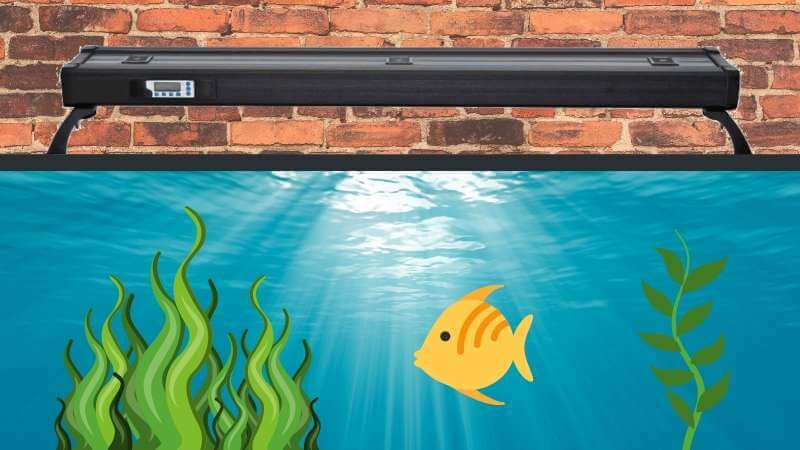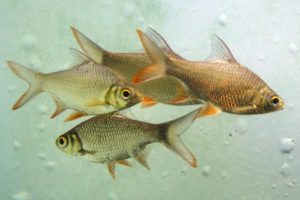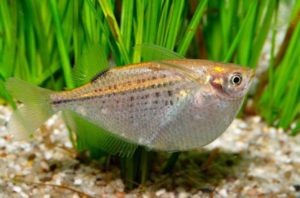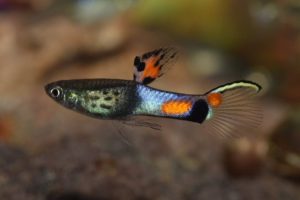Sharing is caring!
Having proper lighting in your aquarium is an important part of your set-up. It serves to not only illuminate your tank for your viewing pleasure, but it also has benefits for the environment of your aquarium as a whole. Whether it’s viewing your fish, growing plants, or breeding, the lighting that you choose will have an effect. Lighting is also one of those areas in this hobby that can get expensive, so it’s best to get it right the first time.
Effects on your fish
Your fish, in nature, will experience a natural day and night cycle. This is important for the health of your fish, as having a proper cycle will decrease stress. The fish will appreciate being on a schedule and will live longer, eat better, be more active, look more vibrant, and breed easier. Some of your fish may be nocturnal, so having an appropriate night cycle will allow them the same courtesy as your day-time (diurnal) fish. A simple 12 hour on and 12 hours off cycle is fine for tropical fish in most instances. You may, however, choose to shorten the daytime period for varying reasons such as an algae issue, or personal preference. Coldwater fish, on the other hand, come from waters where this schedule would vary throughout the year with the seasons. Having healthy plants in your tank will also benefit your fish.
Aquatic plants
Plants need light in order to live. Light is an important part of photosynthesis and without proper lighting, your plants will wilt away and starve. It’s not as simple as just throwing any ole light on your tank though. Your plants will have specific needs that aren’t often met with the standard lights that tank kits come with. This also varies depending on the types of plants you plan on keeping in your tank. Some plants have a much higher light need than other plants. Make sure that you research which plants you want and get a light that is appropriate for them.
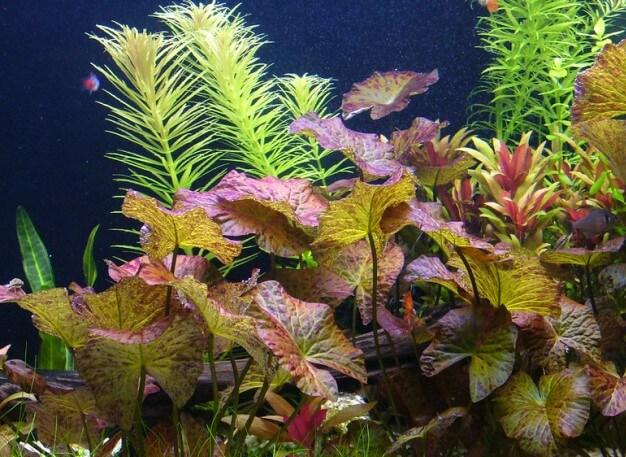
When it comes to low light versus high light plants, it’s not just the brightness that matters. This is where having an understanding of PAR (photosynthetically active radiation) ratings Kelvin ratings, and wavelengths will come in handy. Just keep in mind, plants use all the colors on the spectrum for photosynthesis. So those plain, all-white lights may be great for watching your fish, but they may not be ideal for growing plants.
Color spectrums
First off, “all white” lights aren’t a thing. Those bright white lights that you see have wavelengths in the green and yellow spectrums (550-600nm). These wavelengths are what our eyes pick up the easiest and have a direct effect on the “brightness” of the light (lumen). However, what appears to be a strong light to us isn’t putting off the wavelengths that best promote growth in your plants. What you should look out for here are wavelengths that are in the blue (450nm) and red (650nm) wavelengths.
When it comes to Kelvin ratings you’re measuring the color temperature of light. The lower the Kelvin rating the more “reds” are put off giving a warmer, or orange light. The higher the Kelvin rating the more “blues” are put off giving a cooler, blue looking light. The Kelvin rating of the sun, for example, is about 5600K and can vary a little bit throughout the day. 5600K is considered to be a neutral kelvin rating. This does not tell us the whole story though when we are looking for specific color spectrums for plant growth. A lower Kelvin rating will be more in the red wavelengths but may lack the power to penetrate the water to reach the bottom of your tank. A higher Kelvin rating will have more of the blue wavelengths but can lack the red wavelengths that plants also need. Remember, plants like a spread of all the wavelengths.

Don’t fall into the trap that a higher kelvin rating is better for growing plants. This was thought to be true some time ago simply because a high Kelvin rating appears to be brighter. What our eyes perceive is irrelevant to what plants need.
PAR (photosynthetically active radiation) is the measure of the amount of light available, in the 400nm-700nm range, for plants to photosynthesize. This will vary by the depth of the water the light needs to penetrate in order to reach your plants. Some light manufacturers will list their PAR ratings at various depths. PAR shouldn’t be used alone in determining your choice for aquarium lighting though. It may be that a light will have a high PAR rating and lots of light will reach plants deep in your tank, but it does not necessarily mean that it has the right color spectrums needed. PAR ratings are measured in micromols, or umols. 20-30 umols are considered low light, 50 umols are considered medium light, and 90+ umols are considered high light.

So what should you look for in a good aquarium light for growing plants? Any light that puts off light in both the blue and red wavelengths. A full spectrum light puts off light throughout the entire spectrum of light from blue to green to red. A specific grow light will focus more on the blue and red spectrums with little consideration for the green spectrum. It should be noted that although plants specifically need blue and red, it’s not to say that light in the green spectrum won’t also produce photosynthesis. If your goal is to just grow plants then a grow light is perfect. If you want to mimic natural sunlight, providing a brighter tank and good photosynthesis, then go with a full spectrum light.
Types of aquarium lights
Now that we know what we are looking for, let’s look at what types of lighting are available to us.
- Fluorescent
- Compact Fluorescent
- Metal Halide
- LED
Fluorescent
Fluorescent lighting is a staple in the fishkeeping hobby and is widely available. These bulbs range in lengths from 18 inches to 72 inches, so finding the right size for your aquarium won’t be difficult. They also range in diameter depending on the output you are looking for. The smallest is T2 at 2/8 inch and is the most efficient of all standard fluorescent lighting. Next is the T5 with a diameter of 5/8 inch, T8 at 1 inch, and T12 comes in at 1 ½ inches. There are also HO (high output) versions that can put out as much as double the amount of light but of course, use much more energy.
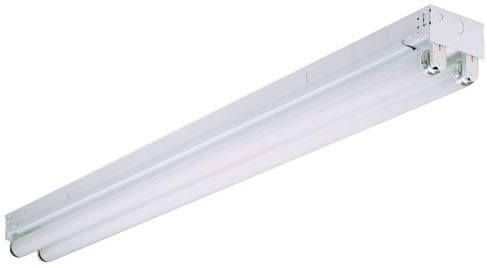
Fluorescent bulbs typically have a lifespan of 10,000 -15,000 hours. So, although they can run for over a year at let’s say 12 hours a day, they will degrade over time and not produce as much light. Generally, you can expect to have to change your bulbs out once or twice a year. High output lights can last you a bit longer. Fluorescent lights are inexpensive so they won’t break the bank having to buy new ones once in a while. HO (high output) fluorescent lights can be used with a planted tank but the standard lights may not be suitable for plants.
Compact Fluorescent
Compact fluorescent bulbs or (CFL) have a higher light output than their regular fluorescent bulb counterparts. They function the same as a standard fluorescent bulb except that they use pairs of much smaller tubes instead of a single tube. For this reason, they have a much better light output to size ratio. Compact fluorescents offer a wider range of light spectrums making them more suitable for growing plants than a standard fluorescent light. CFL’s have a similar lifespan and should be changed out at least once a year.
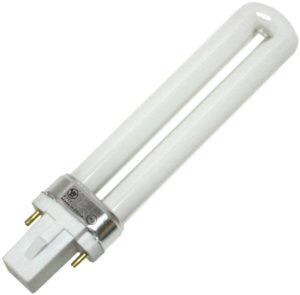
Metal Halide
Metal halide bulbs are a type of high-intensity discharge (HID) bulbs commonly found in car headlights. Of course, in our case, adapted for aquarium use. These are an arc type light that produces light by electrifying a mixture of mercury gas and metal halides. Metal halide bulbs aren’t as energy efficient as fluorescent or CFL’s but they make up for it in their light output abilities. These bulbs can produce a very intense light, making them suitable for large and deep aquariums where other light options won’t cut it. The downside to producing such intense light is that it can also produce intense heat and may require a chiller. Metal halide bulbs can last up to 2 years without needing replacement.

LED lighting
Light-emitting diode (LED) lighting is the latest to come on the market. Although not a super new technology, their recent decreases in price have allowed more hobbyists to go this route for their lighting needs. LEDs are absolutely the most energy-efficient of all the lighting options so far. The higher costs associated with LED lighting is worth it for many aquarists due to their extremely long life span. LED lights will also never add heat to your tank. Traditionally LEDs were used as accent lighting in tanks and also to simulate night time moon effects. However, newer LEDs are capable of putting off enough light for use in planted tanks.

LED lights are very versatile and customizable. Many LED arrays are capable of different effects such as strobing or color changing. I doubt your fish will enjoy such an unnatural effect but at least you’ll have the option for your plant only tanks. LED set-ups are capable of putting off a full spectrum of lighting to encourage plant growth. LEDs are also dimmable and some have programmable controllers available. You’ll have options such as simulating sunrise and sunset with dimming windows and also having a moonlight for night time viewing.
Cheaper alternatives
Aquarium lighting is another one of those things that can be done DIY. It’s easy to take an existing light fixture and re-configure it for LED. So now that cheap fluorescent one that came with your tank isn’t a complete loss. If you don’t have an old fixture try getting your hands on a piece of PVC gutter, they are cheap at most hardware stores so don’t go ripping them off your roof. Gutters make great light fixtures where LED lighting can easily be incorporated. If you really want to save a few bucks head on over to Amazon and get yourself some LED strip lighting. Most of the LED strip lights found on Amazon may not be best for growing plants that require a high amount of light. However, plenty of fishkeepers are having success with growing low to medium light fish.
If you’re buying LED lights not specifically made for aquarium use make sure that you are getting one with an IP rating of at least 65. IP65 will be water-resistant from the occasional splashing or humidity. IP67 is even greater protection as it can be submerged in water temporarily. If you feel like being different and want to put LED accent lighting inside your tank, for some underwater effects, make sure you get IP68.
Sharing is caring!

